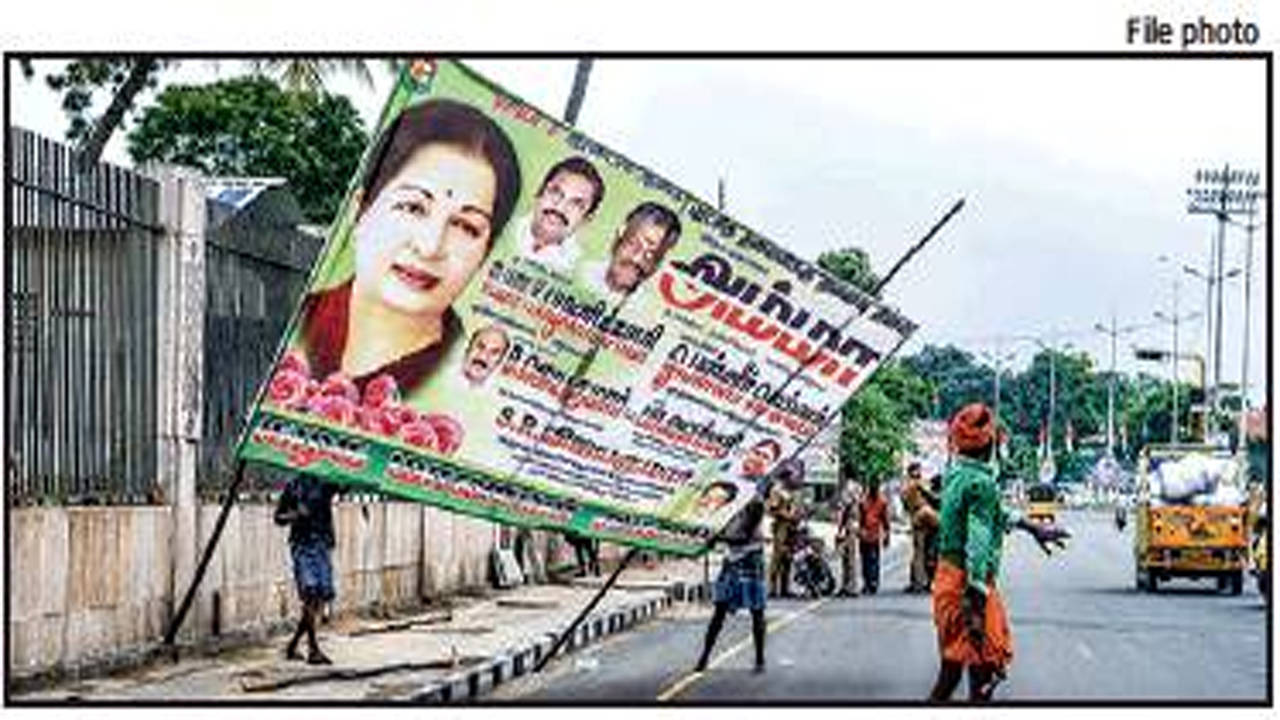Image Source: Unsplash
## Introduction
The Chennai Corporation has recently identified over 1000 illegal digital advertising banners and hoardings in the city. These structures, erected without proper licenses, pose a significant risk to residents during cyclones in the north-east monsoon. In response to this concern, the civic body has taken steps to regulate and remove these unauthorized structures as part of their monsoon preparedness plan. Commercial areas are the primary focus of this drive, as they harbor a large number of these illegal advertising boards. Let’s explore Illegal Digital Advertising Banners in Chennai: A Monsoon Preparatory Concern.
The Drive to Remove Illegal Structures
To address the issue, the Chennai Corporation initiated a drive to remove the digital advertising boards erected by shop owners in commercial areas. The goal of this campaign is to ensure the safety of residents during cyclones and to enforce compliance with licensing requirements. As part of the drive, a group of traders’ representatives met with senior officials at Ripon Buildings to request additional time for the removal of these structures and to obtain the necessary licenses.
Tamil Nadu Vanigar Sangangalin Peramaippu president, A.M. Vikramaraja, stated that approximately 100 out of the estimated 1000 advertising boards have already been removed from commercial establishments in the city. However, he also highlighted the potential financial impact on these establishments, as the removal of these boards from their premises may result in financial losses. The cost of a large digital advertisement board is estimated to be around ₹25 lakh. While the traders are willing to comply and acquire licenses, they request a streamlined process facilitated by a single agency to expedite the issuance of licenses.
Progress and Concerns

Significant progress has been made in removing the illegal digital advertising boards from various commercial areas in Chennai. Areas such as T. Nagar, Anna Nagar, North Usman Road, and South Usman Road have witnessed the removal of a majority of these boards. However, residents in areas like T. Nagar have expressed concerns over the safety of huge digital banners erected on weak structures. They emphasize the need for proper regulation to mitigate potential risks to local residents.
Monsoon Preparedness and Safety
The identification and removal of illegal digital advertising boards by the Chennai Corporation are crucial steps in ensuring the safety of residents during the north-east monsoon. Cyclones during this season can pose significant threats, and weak structures with large banners can exacerbate these risks. By regulating and removing these unauthorized structures, the civic body aims to minimize the potential dangers that these boards may pose during severe weather conditions.
Licensing and Compliance
Obtaining licenses for advertising boards is an essential aspect of ensuring compliance with regulations. The Chennai Corporation’s drive to remove unauthorized structures is a reminder to commercial establishments of the importance of acquiring the necessary licenses for their advertising displays. By doing so, they not only avoid potential penalties but also contribute to the overall safety and aesthetics of the city.
Challenges and Losses Faced by Commercial Establishments
The removal of illegal advertising boards from commercial establishments may result in certain challenges and losses. The financial impact can be significant, considering the estimated cost of ₹25 lakh for a large digital advertisement board. However, it is essential to prioritize the safety of residents and comply with regulations. The traders’ representatives have requested additional time to facilitate the removal of these structures without incurring excessive losses.
Streamlining License Issuance
To address the concerns raised by traders, a streamlined process for license issuance could be beneficial. Having a single agency responsible for handling license applications and approvals would expedite the process, reducing the time and effort required by business owners. This centralized approach would ensure that commercial establishments can quickly obtain the necessary licenses, enabling them to comply with regulations without facing undue financial burdens.
Public Awareness and Participation
Creating awareness among both commercial establishments and residents regarding the importance of licensing and safety regulations is crucial. The Chennai Corporation can collaborate with traders’ associations and residents’ welfare organizations to educate the public about the potential risks associated with illegal advertising boards and the benefits of compliance. This collaborative effort would foster a sense of responsibility among stakeholders, leading to improved safety measures and a visually appealing cityscape.
Conclusion
The identification and removal of over 1000 illegal digital advertising boards in Chennai is a commendable step toward ensuring the safety of residents during the north-east monsoon. By regulating these structures and enforcing compliance with licensing requirements, the Chennai Corporation aims to mitigate potential risks posed by cyclones. While there may be financial challenges for commercial establishments, streamlining the license issuance process and creating awareness can contribute to a safer and more visually appealing city. Through collective efforts, Chennai can become a model for effective regulation and responsible advertising practices.
